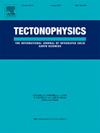Unraveling the link between magma and deformation during slow seafloor spreading
Abstract
Detachment faulting related to oceanic core complexes (OCCs) has been suggested to be a manifestation of slow seafloor spreading. Although numerical models suggest OCCs form under low magma supply, the specific interaction between magmatism and tectonic faulting remains elusive. This paper examines seismic observations detailing the spatiotemporal interactions between magmatism, high-angle faulting, and detachment faulting at a slow-spreading mid-ocean ridge in the West Philippine Basin. We identified a magma-rich spreading phase, indicated by a magmatic top basement and oceanic crust with shallow-penetrating high-angle normal faults. An axial valley reveals an along-strike transition from magmatically-dominated to highly tectonized oceanic crust over a distance of 70 km. Two older OCCs with concave-down fault geometries and a younger OCC with steep-dipping faulting suggest sequential detachments with the same polarity. Our findings suggest: (1) slow seafloor spreading alternates between high-angle faulting with a relatively high magma supply and detachment faulting with a limited magma supply; (2) sequential development of younger detachments in the footwall of its predecessor leads to an asymmetric split in the newly accreted crust; and (3) the life cycle of OCC ends with high-angle faults that overprint the detachment and act as magma pathways, sealing the OCC. Our study captures the dynamic interaction between high-angle and detachment faults and their concurrent and subsequent relationship to magmatic systems. This reveals that strain distribution along strike is critical to OCC formation, thus enriching our understanding beyond conventional considerations such as spreading rates and melt budgets at mid-ocean ridges.

 求助内容:
求助内容: 应助结果提醒方式:
应助结果提醒方式:


